Greta Garbo Movies -10 Greatest Films
Greta Garbo is one of the greatest stars in the history of cinema – not without reason she was given the nickname “divine.” On the screen she became, above all, the personification of mysterious femininity casting an inexplicable spell on men. The Scandinavian actress was mostly cast in roles of strangers – foreigners and immigrants, exuding exotic otherness. Garbo’s image was shaped by her master, with whom she sailed to the United States, Mauritz Stiller. It was he who found a reliable method of filming Greta, which he passed on to her most faithful cameraman, William Daniels. Garbo performed best in close-ups and semi-recumbent positions. Her acting was instinctive and incredibly sensual. On screen, no one could match her, as she focused all the attention of the viewer, creating a unique phenomenon – the Garbo phenomenon. Here are the 10 greatest films with the divine Greta.
Greta Garbo – the best films
1. ”Queen Christina” (1933)
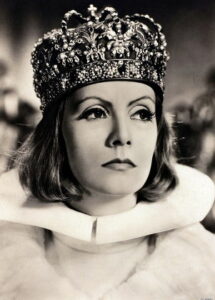
Greta Garbo in “Queen Christina,” directed by Rouben Mamoulian, undoubtedly created one of the best, if not the most outstanding performance of her career. The 1933 film was based on a biography of a Swedish ruler from the Vasa dynasty, whose reign was in the 17th century. The young queen falls madly in love with an attractive Spanish abassador, Antonio. The feeling turns out to be so strong that Christina makes the decision to abandon the throne and leave with her beloved to his homeland. The handsome diplomat is played by John Gilbert, with whom Garbo had a high-profile affair in the past. Therefore, this was a reunion of former lovers, who after years had the opportunity to stand together again on the set. It is worth noting the cinematography of William Daniels. It was with this cinematographer that the actress collaborated on most of her American films. No one, like Daniels, was able to bring out the beauty of the phenomenal star, photographing her in close-ups, often in a semi-recumbent position.
The film’s plot, while alluding to historical events, does not convey the full truth. Indeed, the real reason for the monarch’s abdication was not an affair, but her conversion to Catholicism. However, leaving aside the historical aspects of the production, the momentousness of this picture is primarily related to the role of Garbo herself. Today the famous scene in which the actress removes her crown is interpreted in the context of the star’s biography. It is, as it were, a foreshadowing of the abdication of the queen of cinema – the divine Greta, who, a few years later, indeed abandoned her Hollywood career forever.
2. “Camille” (1936)
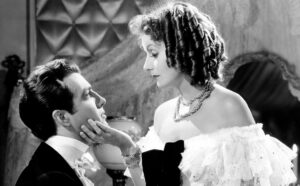
Among the films with Greta Garbo, this one holds a special place. “Camille“, directed by George Cukor, comes, after all, from the most mature period of the actress’s career, when she mastered her dramatic skills to perfection. Some critics even compared Garbo’s creation to the skills of theater legends such as Sarah Bernhardt and Helena Modrzejewska. The film was based on the novel by Alexandre Dumas’ son, who based the plot on the fate of an authentic character: Parisian courtesan Marie Duplessis, appearing in the novel as Marguerite Gautier. The main character unexpectedly finds pure and selfless love, but for the sake of her beloved and his reputation she decides to abandon him. The role of Armand Duvall was played by Robert Taylor.
Greta Garbo was nominated for an Oscar for her performance. Interestingly, this was the only role that the actress herself sought and offered it to the studio. The moving death scene of Marguerite, which came from this film, has gone down in cinema history. This is undoubtedly the pinnacle achievement of Garbo, who set an unsurpassed model for other female players of this character. The star presented on screen the whole range of emotions and diverse means of expression: from erotic charm verging on perversion, through selfish lust for money to sincere love elation and almost metaphysical suffering.
3. “A Woman of Affairs” (1928)
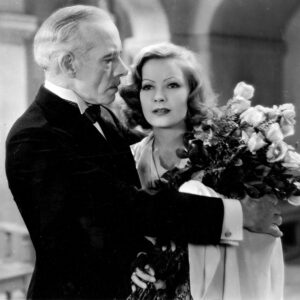
This film with Greta Garbo belongs to the silent period of cinema, when the Swedish actress was building her position in Hollywood and winning the hearts of the public. “A Woman of Affair” directed by Clarence Brown, was based on Michael Arlen’s novel “The Green Hat.” It is a story of lovers separated by fate and social conventions. Diana (Greta Garbo) and Neville (John Gilbert), although they have a love for each other, they can not commit to each other and each of them marries someone else. On their wedding night, the heroine’s husband commits suicide, which ruins her reputation, since everyone believes that the reason for the man’s breakdown was Diana’s promiscuity. Only at the end of the film it turns out that the cause of this tragedy was completely different.
“A Woman of Affairs” is a film that has gone down in cinema history primarily because of one scene. It is about the shot in which Diana, who is in the hospital, receives flowers from her former lover. Here Garbo gives an artistic display of pantomime: a bouquet of roses becomes a substitute for her beloved. The actress cuddles the flowers with desire, tenderness and passion, which reflect her feelings for Neville. The scene ranks among the best in the history of the silent period of the 10th muse.
4. “Anna Karenina” (1935)
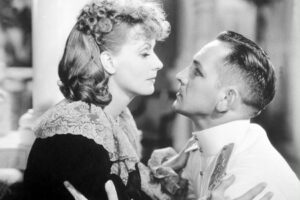
Among the best films with Greta Garbo can not miss “Anna Karenina”. The actress played the title character of Leo Tolstoy’s novel twice. In the silent 1927 version, she starred alongside John Gilbert as Count Vronsky. At the time, the film’s title was specifically changed to “Love,” which created an opportunity to present a catchy advertising slogan: “Garbo and Gilbert in Love” (“Garbo and Gilbert in Love”), referring to the famous romance of the screen couple. The sound version of “Anna Karenina” with the actress was directed in 1935 by Clarence Brown. It is a story set in 19th century Czarist Russia, among the aristocracy. Anna Karenina, out of love for a handsome young count, decides to abandon her husband, with which she risks ostracism and loss of contact with her beloved son.
The sound version of the film was advertised with the slogan: “Anna Karenina talks.” Garbo was partnered here by Frederic March. Of course, he did not match the divine Greta on the screen, but this was the case in most pictures with this actress: usually Garbo stole everyone’s scenes. There are many iconic shots from “Anna Karenina”: the first meeting between Vronsky and Anna – when the man spots her face shrouded in mist and smoke at the train station, the moments showing Anna with her son (played by Freddie Bartholomew) and the great scene when the heroine visits the child on his birthday. Then her husband drives her out of the house, and as she walks down the stairs with each step she seems to carry more and more weight on her shoulders until the climactic moment of slamming the door behind Garbo.
5. “Nitotchka” (1939)
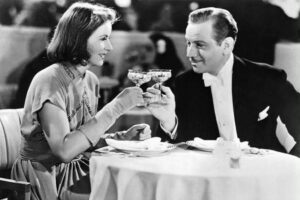
“Ninotchka” is an outstanding romantic comedy directed by Ernst Lubitsch, and the role of the divine Greta in this film was counted among her lasting contributions to the history of cinema. This was the actress’s first comedic performance, and on top of it, she performed magnificently. The star received an Oscar nomination for it. The advertising placards included the telling slogan: “Garbo laughs!”, which attracted crowds of viewers to the cinemas and ensured “Ninotchka” a great box office success. The main character of the story is a young Soviet agent who is sent by the authorities to Paris to solve a case of embezzlement of government money. After all, before Ninotchka, three Soviet envoys visited the French capital to sell Princess Swana’s (Ina Claire) jewels seized during the revolution. Nevertheless, when the men got a taste of European luxuries, they lost their enthusiasm for the task. One hundred percent loyal to the Bolsheviks, Ninotchka initially copes well with the assigned task. However, when she meets the Duchess’s handsome and gallant proxy, Leon (Melvvyn Douglas), things begin to get complicated.
Garbo does well in the role of the Soviet agent, and even better captures the psychological metamorphosis of the heroine, who gradually succumbs to the atmosphere of freedom and allows herself to reveal her true, hitherto restrained nature. It turns out that under the mask of a cool servant hides a cheerful girl thirsting for amorous raptures and ordinary pleasures. An important role in the film is played by the telling contrast between the image of vibrant Paris and grim Moscow, which illustrates the gulf separating the free world from totalitarian reality.
6. “Grand Hotel” (1932)
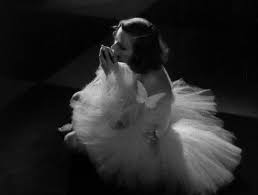
This is another great film with Greta Garbo, although the actress did not play the main role in it. Edmund Goulding’s Oscar-winning “Grand Hotel” tells the story of several characters: the guests of the titular luxury hotel. Garbo played a prima ballerina whose career is coming to an end, and she is on the verge of mental endurance. When Madame Grusinskaya is about to commit suicide after an unsuccessful performance, she is unexpectedly dissuaded from this step by a hotel thief (played by John Barrymore) impersonating an aristocrat. At the same time, the story of a young stenographer (played by Joan Crawford), who gets an offer from her wealthy boss to travel to Paris together in an ambiguous role, is playing out in an adjacent room.
The Russian ballet star’s creation is one of the iconic roles of the divine Greta. An indelible impression is made both by her phenomenal cinematography in ethereal costume (especially the scene in which she passionately kisses her ballet shoes), her evocative acting that conveys the character’s mental unraveling (the famous phone call scene), and her career-defining line, deliberately repeated in other films: “I want to be alone.” Despite the fact that her character appears only in the twentieth minute of the film, she falls deeply into the memory of the audience. Garbo’s performance in “Grand Hotel” was best summed up by her biographer, Barry Paris: “She was like an exclusive perfume that must be kept locked up and used in moderation.”
7. “Flesh and the Devil” (1927)
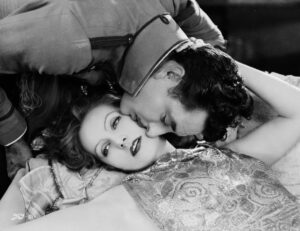
The list of the best movies with Greta Garbo can not miss “Flesh and the Devil”, directed by Clarence Brown. This is the first picture in which the actress starred with John Gilbert, and it was on this occasion that the flamboyant romance between the Swedish star and the American amante was set in motion. Interestingly, the plot of the film was as conducive as possible to such a development of events, and several of its iconic scenes are considered today almost as a document of the nascent feeling between Garbo and Gilbert. Benjamin Glazer’s screenplay was based on the novel “Immortal Past” by Hermann Sudermann, which opened with a very telling sentence that best summarizes the work’s message: “When the devil cannot reach us through the soul, he creates a beautiful woman to tempt us through the body.” The film is set in Berlin. Here are two childhood friends who fall in love with an attractive young married woman, Felicitas. This becomes a bone of contention between the men and leads to tragedy.
“Flesh and the Devil ” is a silent production that went down in cinema history because of the phenomenal love scenes between Garbo and Gilbert. These include shots of the famous kiss filmed in an expressionist chiaroscuro style or one of the first horizontal erotic scenes in the history of the X muse (when both are in a reclining position). The frames that made audiences of the time almost faint, on the other hand, were the situation in the church, when Greta receives Holy Communion in the form of wine and turns the chalice in such a way that her lips touch the place from which Gilbert had just drunk. It was a masterful idea to show the sinful, almost sacrilegious nature of lovers’ sensual pleasure. The film clearly rubbed against the limits of the Hays Code, caused a real sensation and became a huge financial success.
8. “Mata Hari” (1931)
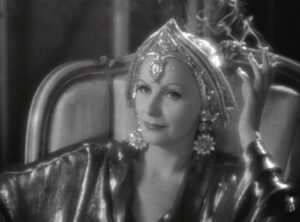
“Mata Hari” is also one of the most famous movies starring Greta Garbo. Directed by George Fitzmaurice, the production tells the story of an authentic character, Dutch dancer Margaretha Geertruida Zelle, who conquered European stages under the alias Mata Hari. During World War I, the woman engaged in double espionage activities on behalf of France and Germany, for which she was executed in 1917. Mata Hari was famous for her numerous affairs – she was the keeper of many influential men who could pass important information to her. In Fitzmaurice’s film, the heroine’s story gains a tragic dimension: she is not just a ruthless spy, but also has a completely different face. This is a woman who falls into the snare of the services because of her reckless love for a young Russian pilot, Lieutenant Alexis Rosanov (Ramon Novarro), and sacrifices her life for her beloved.
The movie itself is not the best, while Greta Garbo, as usual, rises to the occasion: she manages to convey the ambiguity of her character. Once she is a cynical and perversely spoiled femme fatale, in a moment she shows the face of an unconscious lover and finally a tragic heroine who walks with dignity to her death assisted by a firing squad. The actress’s most fanciful costumes also come from this film, especially the various headgear, such as the famous, strikingly glamorous cap, in which Garbo, not coincidentally, resembles the embodiment of a sphinx woman – the epitome of exotic mystery.
9. “Anna Christie” (1930)
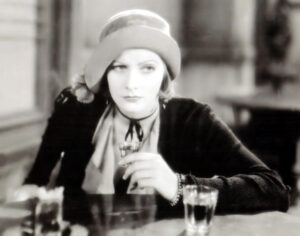
“Garbo talks!” – this slogan promoted the first sound film of the Scandinavian star’s career. The picture was an incredibly important test for the actress, since the end of the silent period of cinema led to the collapse of the careers of many famous artists. Such a fate befell, for example, John Gilbert, whose voice did not appeal to the public and soon had to say goodbye to his position as a Hollywood leading man. Not surprisingly, Garbo’s sound debut caused a huge sensation. The script for “Anna Christie” was based on a play by Eugene O’Neill, and was directed by Calrence Brown. It is a story about a prostitute who one day saves a drowning sailor, Matt Burke (Charles Bickford), from death. The youngsters fall in love with each other, but the man has no idea about his chosen one’s past.
The scene in which Garbo utters her first line is a cinema classic. Anna Christie enters a pub, sits down on a chair and calls out to the bartender: “Give me a whiskey with ginger beer, just don’t be sorry, darling!”. This was the first famous line delivered in the film by the divine Greta. Audiences were delighted with the voice of their favorite, and one critic wrote that it was “the voice of a Viking daughter, inherited from generations of sailors accustomed to shouting over the roar of the sea.” Garbo’s utterances were low-toned, sounding somewhat husky and incredibly sexy. A German-language version of the film was also recorded, with the exception of the divine Greta played by a different cast. The picture was slightly different from the original, including the character of the heroine played by the Scandinavian star. Garbo herself said years later that it was her performance in the German “Anna Christie” that she considered her best role.
10. „Susan Lenox. Her Fall and Rise”, 1931
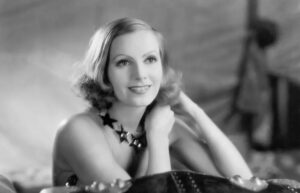
This film with Greta Garbo is based on the novel by David Graham Philips, and directed by Robert Z. Leonard. “Susan Lenox” is the story of a young poor girl, Helga, who, forced by her family into an unwanted marriage, saves herself by running away and ends up at the cottage of a certain engineer Rodney Spencer. This one offers the heroine shelter, and soon the two fall in love with each other. Unfortunately, fate separates the couple, and Susan has to face the cruel reality.
This is a movie in which Greta Garbo starred with Clark Gable. It may not have been the best film, but years later it is nostalgic to see stars of this magnitude on screen. Gable, of course, was not yet as big a Hollywood figure as he was after “Gone with the Wind”, but he already had his reputation at the time. Attention is drawn especially to Daniels’ outstanding cinematography, especially the scene of Susan’s attempted rape by her would-be husband. It is depicted in an expressionist style: we see a huge shadow on the wall trying to enslave the heroine. “Susan Lenox” was an expensive film, but it also turned out to be quite a success, of course, primarily due to the actors playing the main roles.
Literature:
B. Paris, “Garbo: A Biography”, 1995.

